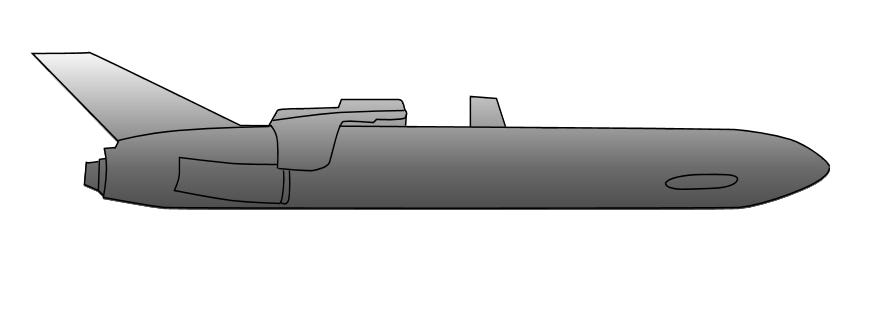Ukraine Unleashes Massive 200-Drone and Missile Strike on Russia’s War Machine
January 2025 is shaping up to be a rough month for Putin.
Cruelty is the Kremlin’s trademark.
One of their most notorious strategies is called "double tapping," a tactic honed and perfected in Aleppo, Syria. They fire a missile into civilian structures, including hospitals, and as first responders rush in to rescue the injured, they launch a second wave of missiles at the same location—a uniquely sinister strategy born in the Kremlin’s dark laboratory.
Despite having ample opportunity, Ukraine has no intention of stooping to the Kremlin’s level. If they wanted to sow chaos, they could simply target Russia’s electric grid, plunging entire regions into darkness. But after three years of war, Ukraine remains disciplined, focusing instead on dismantling the Kremlin’s war machine—not targeting average Russians.
For more than six months, I’ve waited for Ukraine to deploy large-scale, complex drone and missile attacks on critical Russian military targets. They’ve had this capability since mid-2023 but refrained from using it at scale—until now. This month, Ukraine has begun executing two highly effective strategies designed to cripple Russia’s war infrastructure.
First, Ukraine targets Russian oil depots with drone strikes, allowing fires to rage for days. Once the flames have weakened the structure, they launch a second wave of drones to finish the job. This approach not only destroys millions of dollars' worth of oil but also demolishes the storage infrastructure itself, compounding the damage.
They employed this “attack, wait, watch, attack again” strategy on a key oil depot in the Rostov region. On August 18, 2024, Ukrainian drones struck the oil depot in Proletarsk. Five days later, as the fire continued to burn, Ukrainian drones returned to obliterate what remained of the structure. This methodical approach is poised to deal a significant blow to the Kremlin’s war machine.
Russians rely on large-scale oil storage facilities in their rear lines. Destroying these storage sites would create massive logistical challenges, straining their ability to sustain the war machine.
This week, Ukraine deployed the same strategy against the oil depot at Engels Air Base, a critical facility supporting Russia's long-range bombers. The depot was first struck on January 8th, 2025 and as the fire continued to rage, another wave of drones hit the target last night. This facility supplies fuel to the air base hosting Russia’s Tu-95 and Tu-160 bombers, which routinely launch attacks on Kyiv from the north.
But wait—Engels Air Base, located near Saratov, is about 700 kilometers from the Ukrainian border. Isn’t this one of the most heavily protected facilities in Russia?
It is. Or at least, it was.
Last night’s attack demonstrated Ukraine’s growing capability. Russian targets, both well-defended and seemingly defenseless, were successfully hit. The strikes ranged from as close as 200 kilometers to as far as 1,100 kilometers inside Russian territory. While Russia’s air defenses were active, particularly around Engels Air Base, they were overwhelmed.
Ukraine executed a coordinated strategy, beginning with long-range drones to draw the attention of Russian air defenses. As these defenses engaged, precisely-timed missiles slipped through the gaps, followed by additional drone strikes to maximize damage. The result was devastating: multiple chemical, plastic, and explosive production facilities were destroyed, along with significant damage at Engels. Nearly 200 drones and missiles were used in what became Ukraine’s largest combined strike to date.
This operation showcased remarkable coordination among Ukraine’s forces, integrating drones, missiles, special operations, and real-time intelligence. It felt as though Ukraine was monitoring the attack in real time, adapting follow-up strikes based on the evolving situation.
Ukraine has proven its ability to target critical infrastructure deep within Russia—and they show no signs of stopping. If Ukraine scales up its domestic production of drones and missiles to support sustained weekly strikes, the effects could be catastrophic for Russia’s economy and war effort. Refineries, factories, ports, power plants—nothing would be safe from systematic devastation.
That said, Ukraine might not need to go that far. By consistently targeting Russia’s defense production facilities, Ukraine can drive up the Kremlin’s war costs while choking the flow of supplies to the front lines. If chaos spreads on the battlefield, Russia’s infantry-heavy ground forces could crumble under the strain.
It will take time for this deep-strike campaign to fully impact the front lines, but the strategy is clear: Ukraine can break the Russian war machine by dismantling it from far. By focusing on deep-fire campaigns and disrupting defense production, Ukraine can defend its frontlines while turning the tide of the war.
Perhaps Ukraine anticipated this phase all along, which explains their measured response to minor territorial losses. Their focus now should be singular: invest heavily in ramping up long-range drone and missile production. With a sustained campaign targeting the Kremlin’s war apparatus, Ukraine can bring this war to a decisive end.







That is so good to hear, tactically adept, industrially sophisticated and strategically brilliant. Honor is due.
Slava Ukraine 🇺🇦